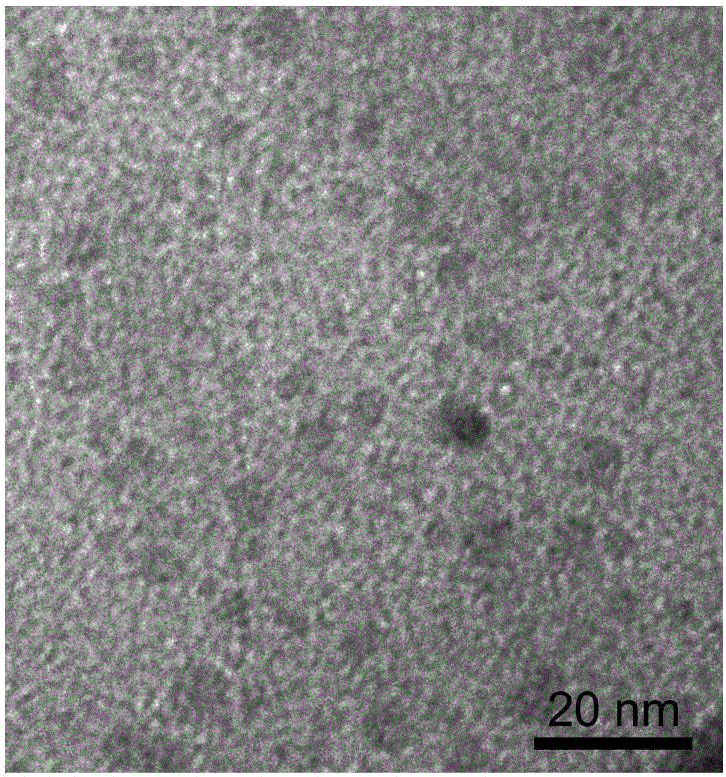Preparation method of quaternary ammonium salinized fluorescent carbon dot and application of quaternary ammonium salinized fluorescent carbon dot in bacterium resisting and gram positive bacterium and gram negative bacterium differentiating
A technology of gram-positive bacteria and fluorescent carbon dots, which is applied in the field of nanomaterials and nanomedicine, can solve the problems of limited antibacterial effect and low net charge density of antibacterial agents, and achieve low cytotoxicity, avoid drug resistance, and good antibacterial effect of nature
- Summary
- Abstract
- Description
- Claims
- Application Information
AI Technical Summary
Problems solved by technology
Method used
Image
Examples
Embodiment 1
[0037] Preparation of aminated carbon dots (AEEA carbon dots) (reaction principle see Figure 1b ), including the following steps:
[0038] Step 1. Add diethylenetriaminopropyltrimethoxysilane (AEEA) to glycerin, stir and mix;
[0039] Step 2. React in a hydrothermal reactor at 260°C for 12 hours to form a carbon dot solution;
[0040] Step 3. Centrifuge to remove the precipitate, and the supernatant is dialyzed in ultrapure water for 2-3 days with a dialysis bag with a molecular weight cut-off of 1000 to obtain a pure carbon dot solution. Wherein, the volume fraction of the divinyltriaminopropyltrimethoxysilane is 9.1%.
Embodiment 2
[0042] The preparation of quaternized ammonium salt antibacterial carbon dot (CD-12) (reaction principle is shown in Fig. 1), comprises the following steps:
[0043] 1) lauryl betaine, NHS and EDC were activated at room temperature for 0.5 hours in a 2-(N-morpholine)ethanesulfonic acid buffer solution at pH=6 at a molar ratio of 1:10 and 1:20, respectively;
[0044] 2) Add the aminated carbon dots in such a way that the material ratio of dodecyl betaine to the raw material diethylenetriaminopropyltrimethoxysilane for preparing the aminated carbon dots is 5:1, and react at room temperature for 4 hours. Obtain quaternized ammonium salt carbon point;
[0045] 3) Use a dialysis bag with a molecular weight cut-off of 1000 to dialyze the quaternized carbon dot solution in ultrapure water for more than 2 days to obtain a pure quaternized carbon dot solution. The particle size characterization results are shown in Figure 2.
Embodiment 3
[0047] The preparation of aminated carbon dots, this group of examples is similar to Example 1, the difference is that the reaction temperatures in step 2 are 240°C, 245°C, 250°C, 255°C, 265°C, 275°C and 280°C.
PUM
 Login to View More
Login to View More Abstract
Description
Claims
Application Information
 Login to View More
Login to View More - R&D
- Intellectual Property
- Life Sciences
- Materials
- Tech Scout
- Unparalleled Data Quality
- Higher Quality Content
- 60% Fewer Hallucinations
Browse by: Latest US Patents, China's latest patents, Technical Efficacy Thesaurus, Application Domain, Technology Topic, Popular Technical Reports.
© 2025 PatSnap. All rights reserved.Legal|Privacy policy|Modern Slavery Act Transparency Statement|Sitemap|About US| Contact US: help@patsnap.com



